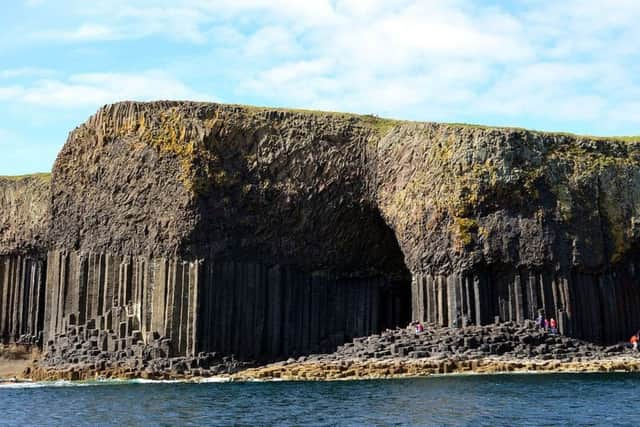Video: The story of Fingal's Cave
Fingal’s Cave is one of Scotland’s geological marvels, on the windbuffered coastline of the Isle of Staffa.
Mesmerising hexagonal basalt columns rise up from the sea to the ceiling of the 227ft cavern, the result of cooling Paleocene lava pouring out of the earth some 60 million years ago.
Advertisement
Hide AdAdvertisement
Hide AdAs the molten rock cooled above and below, the fracturing rock formed huge tetrahedral columns, eventually resulting in the hexagonal column structure of the island today.


During good weather, some boat excursions dock on the Staffa coast and visitors walk on a pathway over the columns a little way inside the cavern.
In Irish mythology, Fiann MacCumhaill was an ancient warrior - once a celtic god and worshipped by the Cult of Finn in celts around Europe.
Fingal’s Cave took its name from Scottish 18th Century poet James MacPherson’s reimagining of Finn in his Ossian works, ‘Fingal, An Ancient Epic Poem’, adapted from ancient Scottish Gaelic verse.


Several high-profile Scots have visited Fingal’s Cave over the years. Sir Walter Scott was particularly taken by the cave’s enchanting rock formations.
He noted how it was, “composed entirely of basaltic pillars as high as the roof of a cathedral, and running deep into the rock, eternally swept by a deep and swelling sea, and paved, as it were, with ruddy marble, baffles all description.”
The cavern is mentioned in Jules Verne’s The Mysterious Island and Journey To The Centre Of The Earth. Composer Felix Mendelssohn’s visit in 1829 resulted in The Hebrides, Op.26, also known as Fingal’s Cave Overture.
